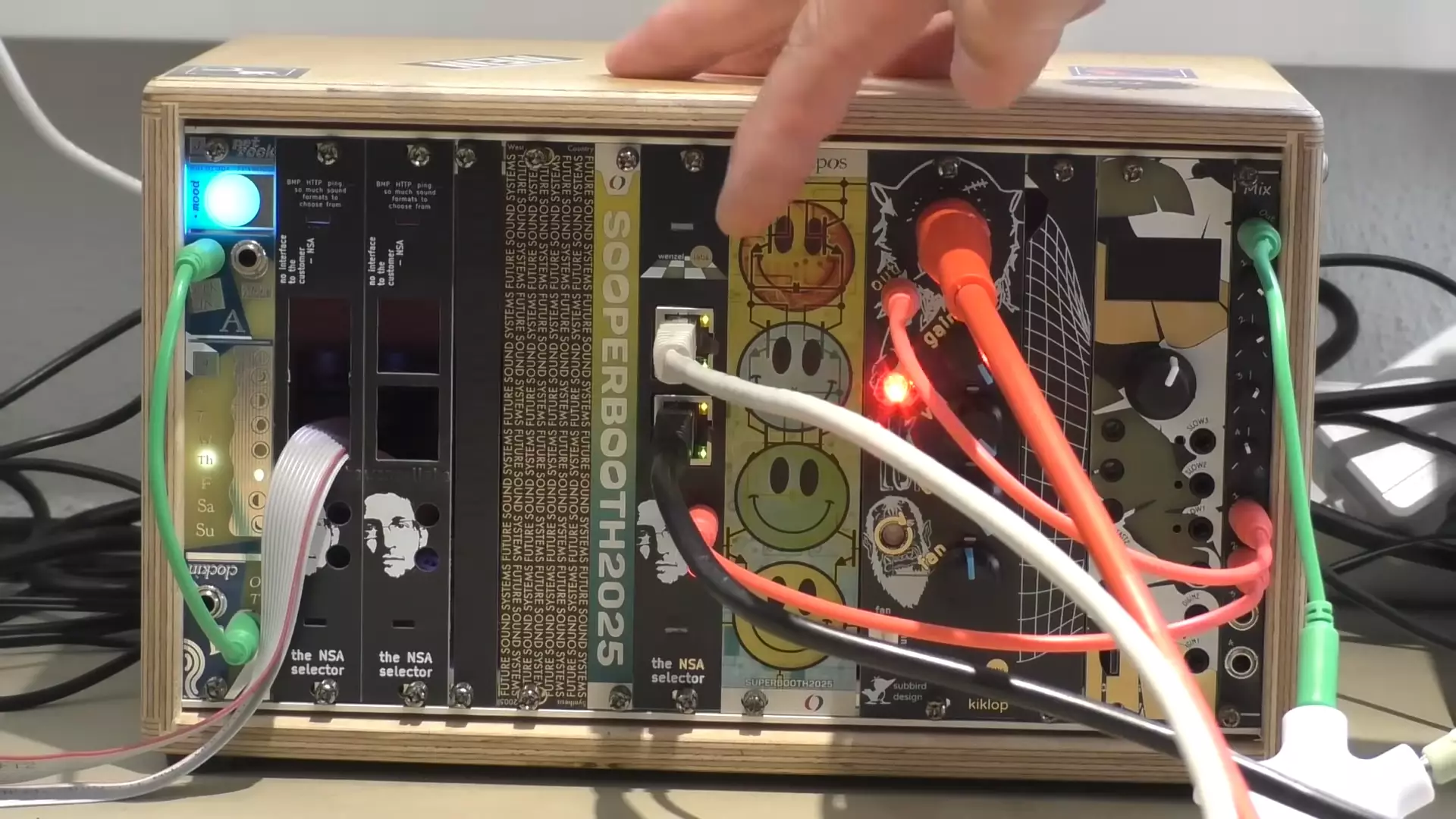In an era where digital technology dominates much of our auditory landscape, the notion of transforming network traffic into musical chaos feels both innovative and rebellion against convention. The NSA Selector, a Eurorack module devised by Wenzellabs, boldly blurs the boundaries between the digital and the acoustic, offering a provocative tool that invites us to reconsider the very fabric of sound creation. While it may not be destined for mainstream musical charts, its raw, unpredictable output exemplifies the untamed creative spirit that drives experimental artists today.
What makes the NSA Selector truly intriguing is its core concept: tapping directly into network traffic and converting bits into sound. Unlike traditional audio interfaces or synthesizers that generate predictable tones, this device takes raw digital data—unfiltered and unprocessed—and renders it into sound signals. The result is a chaotic soundscape that reflects the unpredictable nature of digital communication itself. This approach aligns with the ethos of noise music, where embracing randomness and distortion becomes an act of artistic rebellion.
The Appeal of Digital Noise as Artistic Expression
Many musicians and sound designers find beauty in the abstract, chaotic, and sometimes abrasive qualities of noise. The NSA Selector elevates this appreciation by offering a physical instrument that embodies digital disturbance. Instead of fighting against the cacophony of network traffic—whether it’s a busy Google Maps page or a streaming video—the device harnesses that chaos, turning it into an unpredictable sonic palette.
This unconventional method disrupts our typical notions of sound production, challenging the idea that musicality requires harmony and structure. The sounds it produces are inherently discordant, often resembling industrial noise or the harrowing screeches of malfunctioning hardware. Yet, within this dissonance lies a unique form of artistic expression that defies conventional aesthetics. It urges us to question the boundaries of what constitutes music and insists that beauty can be found in disorder.
Unpredictability as a Creative Tool
The NSA Selector doesn’t just generate noise; it creates an interaction between digital space and sonic experience. Notably, its responses are directly tied to the activity happening on the network, meaning the more data in transit or the more complex the digital environment, the more chaotic the sound output. Wenzellabs’ experiments with Google Maps and a browser game like 2048 showcase how the device reacts to data flow: movements, data load, and resource allocation all translate into sonic phenomena.
This real-time connection to digital processes transforms the module into a live commentary on internet activity—a metaphorical lens that reveals the hidden, often unnoticed chaos beneath our screens. The sounds derived from image processing, for instance, demonstrate how visual resources impact the sonic texture, creating an almost synesthetic experience. The randomness catalyzed by the device exemplifies the core of experimental music: embracing imperfection and unpredictability as fundamental elements of creative control.
The Potential Is Limited but Inspiring
While the NSA Selector may not produce traditionally musical or aesthetically pleasing sounds, its value extends beyond mere noise. It embodies a form of artistic exploration rooted in the unpredictable nature of modern technology. Its rawness forces us to confront the complexity and noise inherent in the digital age, turning our everyday internet activity into a canvas of sonic experimentation.
For the curious musician or hacker, the device presents an avenue to challenge norms and push the boundaries of synthesis. Its affordability—available as a kit or assembled for under $110—democratizes access to a tool that is fundamentally about chaos and discovery. As a piece of hardware, it also sparks ideas about integrating unexpected data streams into live performances or composition, an element that could be harnessed for surreal soundscapes or avant-garde compositions.
The NSA Selector doesn’t aim to replace traditional synths but to augment our understanding of sound’s potential—showing that even the most chaotic or mundane digital noise can serve as a source of artistic inspiration. It encourages a mindset where disorder becomes a deliberate and valuable part of the creative process, inviting musicians to view data not just as information but as a sonic substance capable of transforming the auditory landscape.
In the end, the NSA Selector exemplifies the disruptive power of experimental hardware—reminding us that beauty often resides in chaos, and that pushing the boundaries of technology can lead to exciting, unforeseen artistic horizons.

